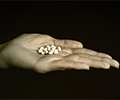Tag Archives: SGLT2 inhibitors
April 2025 Br J Cardiol 2025;32(2) Online First
BSH 2024: societies together – fostering synergy
Anna Briggs, Louise Collier, Edith Donnelly, Becky Hyland, Hayley Rose, and Teresa O’Nwere-Tan
BSH Nurse Forum Author Board
October 2024 Br J Cardiol 2024;31:129–35 doi:10.5837/bjc.2024.041
Cardiorenal effects of therapies for type 2 diabetes and obesity
Clifford J Bailey, Caroline Day
| Full textSeptember 2024 Br J Cardiol 2024;31(3) Online First
British Cardiovascular Society annual conference, 2024: back to the patient
Samuel Krasner
| Full textAugust 2024 Br J Cardiol 2024;31(3) doi:10.5837/bjc.2024.036 Online First
Correspondence: Important safety aspects in SGLT2 inhibitor prescribing in heart failure
Ismail Sooltan, Firuza Dzhakhangirli, Rajib Haque, Sudantha Bulugahapitiya
| Full textMarch 2024 Br J Cardiol 2024;31:11
The failing heart and kidney: improving prevention and treatment
Mohammad Wasef, Sarah Birkhoelzer
| Full textFebruary 2024 Br J Cardiol 2024;31:9–10
BSH 2023: collaboration, coordination and cooperation – 25in25
J. Aaron Henry
| Full text
June 2018 Br J Cardiol 2018;25:73–6 doi:10.5837/bjc.2018.016
Prescribing glucose-lowering drugs for patients with cardiac disease
Miles Fisher, Emma Johns, Gerry McKay
| Full textAugust 2017 Br J Cardiol 2017;24:(3) Online First
BCS 2017: spotlight on heart failure
BJC Staff, Dr Richard Crawley, Dr Brian Halliday, Dr Rosita Zakeri
| Full text
April 2017 Br J Cardiol 2017;24:68-71 doi:10.5837/bjc.2017.010 Online First
SGLT2 inhibitors
Emma Johns, Gerry McKay, Miles Fisher
| Full text
March 2012 Br J Cardiol 2012;19:26–9 doi:10.5837/bjc.2012.005
Drugs for diabetes: part 8 SGLT2 inhibitors
Alison MacEwen, Gerard A McKay, Miles Fisher
| Full text

